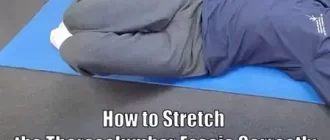Anterolisthesis happens when one of the bones in your spine slides forward over the one below it, usually in the lower back. Think of it like a small shift in the spine’s “stack” that throws the balance off and creates tension or pain. While it can sound serious, most cases can be managed with the right mix of rest, movement, and care.
When a case of anterolisthesis develops in the lumbar or neck area, it often comes from wear and tear, an old injury, or even genetics. Doctors see this spinal slippage more often in adults over 50, especially women, as joints and discs weaken with age. Depending on how far the vertebra moves, anterolisthesis may lead to mild stiffness or sharper pain that travels down the legs.
For someone living with anterolisthesis, when back pain or numbness appears during bending or walking, it’s often the body’s signal that something’s misaligned. Targeted stretching, core-strengthening exercises, and mindful posture can relieve pressure, while more advanced cases may need medical guidance to restore comfort and stability.
Common Symptoms of Anterolisthesis
The symptoms of anterolisthesis can vary depending on the degree of slippage and the location of the affected vertebrae. However, some common symptoms include:
- Lower back pain
- Pain that radiates to the buttocks or legs
- Stiffness and limited range of motion in the spine
- Numbness or tingling sensation in the legs or feet
- Muscle weakness in the legs
- Difficulty walking or standing for long periods
Causes
Anterolisthesis can be caused by a variety of factors, including:
- Degenerative changes in the spine, such as disc degeneration or osteoarthritis
- Traumatic injuries, such as fractures or dislocations
- Congenital abnormalities in the spine
- Inflammatory conditions, such as spondyloarthropathy or rheumatoid arthritis
It is important to determine the underlying cause of anterolisthesis in order to develop an effective treatment plan.
How Anterolisthesis is Diagnosed
To diagnose anterolisthesis, a healthcare provider will typically perform a physical examination and review the patient’s medical history. Imaging tests, such as X-rays, CT scans, or MRI scans, may also be ordered to assess the severity of the slippage and identify any associated spinal abnormalities or nerve compression.
Treatment Options
The treatment for anterolisthesis will depend on the severity of the slippage, the presence of symptoms, and the underlying cause. In many cases, non-surgical treatments are initially recommended, while surgical interventions may be considered for severe or persistent cases that do not respond to conservative measures.
Non-Surgical Treatments for Anterolisthesis
Non-surgical treatment options for anterolisthesis may include:
- Rest and activity modification: Avoiding activities that exacerbate symptoms and allowing the spine to heal.
- Physical therapy: Strengthening exercises and stretches to improve spine stability, flexibility, and posture.
- Pain medication: The use of over-the-counter or prescription medications to manage pain and inflammation.
- Epidural steroid injections: Injections of corticosteroids into the epidural space to reduce inflammation and alleviate symptoms.
- Assistive devices: The use of braces or supports to provide spinal stability and pain relief.
Surgical Interventions for Anterolisthesis
In cases where non-surgical treatments are ineffective or the slippage is severe, surgery may be considered. Surgical interventions for anterolisthesis aim to stabilize the spine, relieve nerve compression, and improve overall spinal alignment. The specific surgical procedure will depend on the individual case and may involve spinal fusion, decompression, or a combination of both.
Recovery and Rehabilitation
The length and process of recovery and rehabilitation after anterolisthesis treatment will differ based on the specific type and severity of treatment. After surgery, patients may be required to participate in a rehabilitation program that involves physical therapy, managing pain, and making lifestyle changes. It is crucial to adhere to the instructions of healthcare professionals and attend scheduled appointments to track progress and avoid any complications.
Preventing Anterolisthesis
While some cases of anterolisthesis cannot be prevented, there are steps individuals can take to reduce their risk. These include:
- Maintaining a healthy weight to minimize stress on the spine
- Practicing good posture and body mechanics during daily activities
- Regularly engaging in exercises that strengthen the core and back muscles
- Avoiding activities that place excessive strain on the spine, such as heavy lifting or repetitive bending
By adopting these preventive measures, individuals can help safeguard their spine and reduce the risk of anterolisthesis and other spinal conditions.
About the Author
Reyus Mammadli is the author of this health blog since 2008. With a background in medical and biotechnical devices, he has over 15 years of experience working with medical literature and expert guidelines from WHO, CDC, Mayo Clinic, and others. His goal is to present clear, accurate health information for everyday readers — not as a substitute for medical advice.







